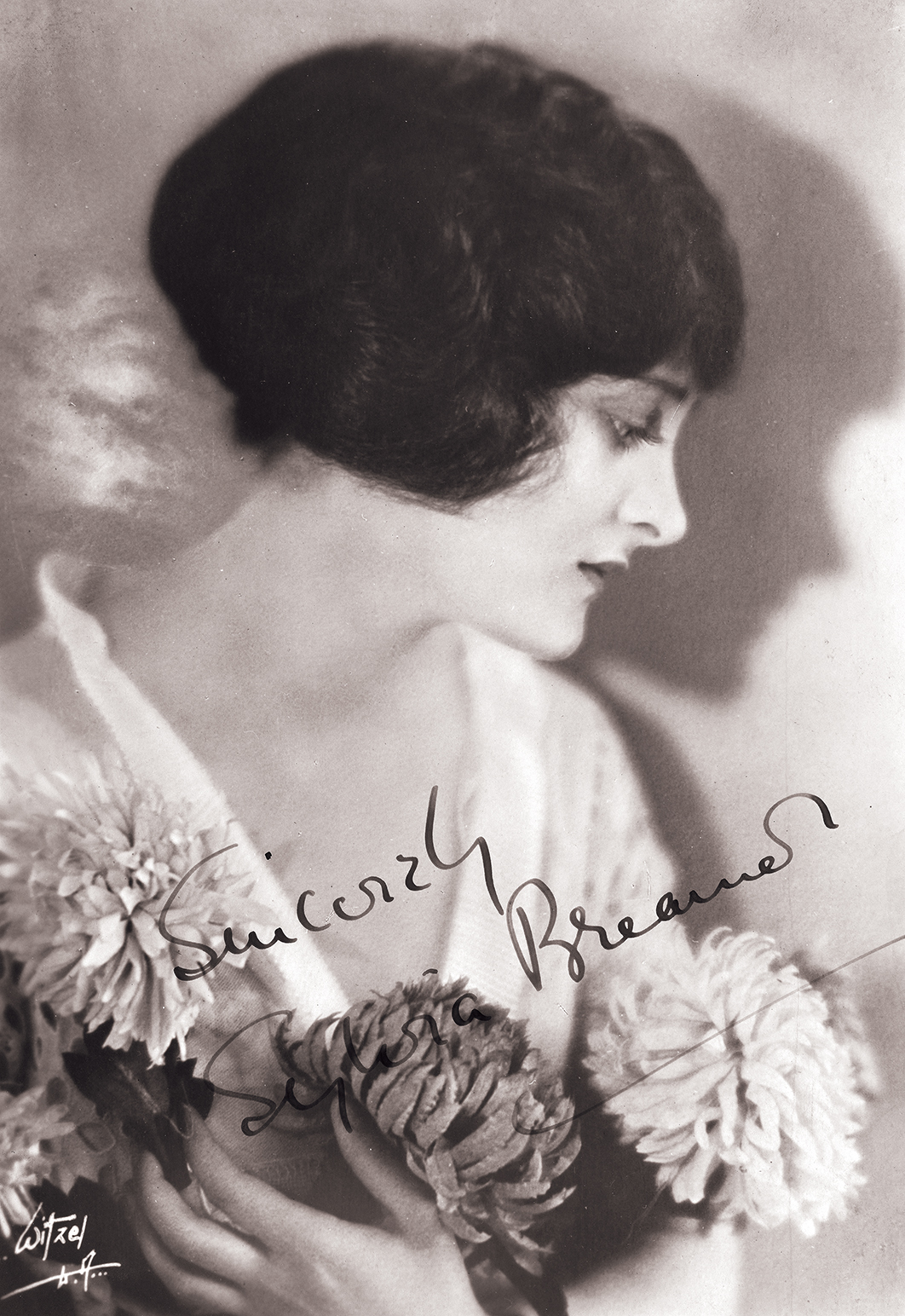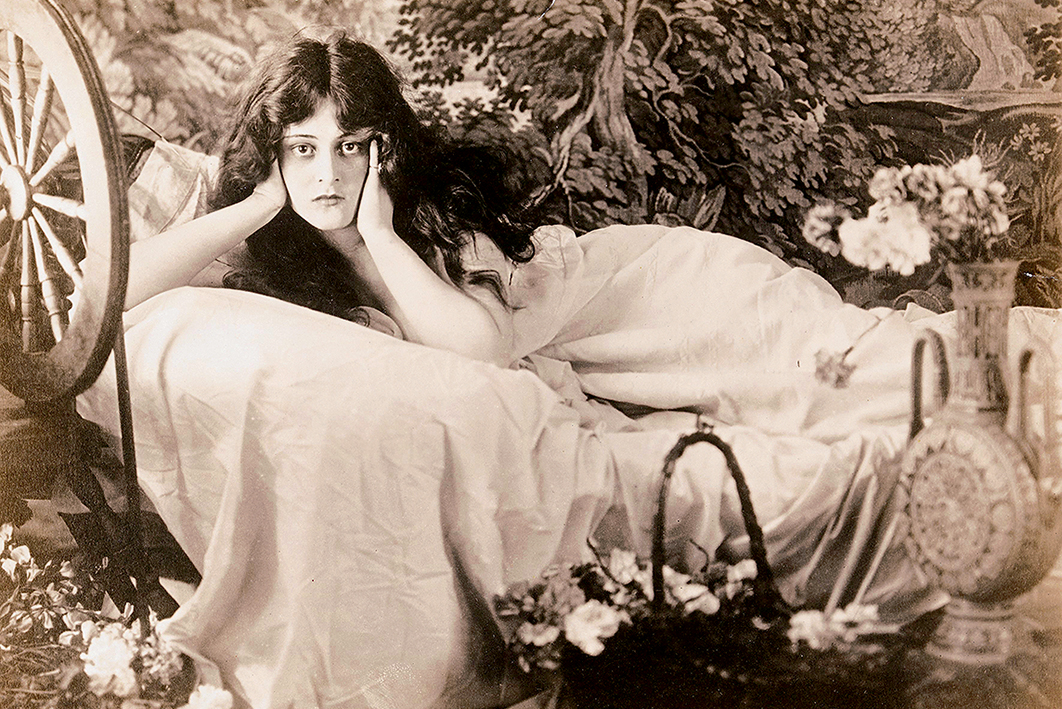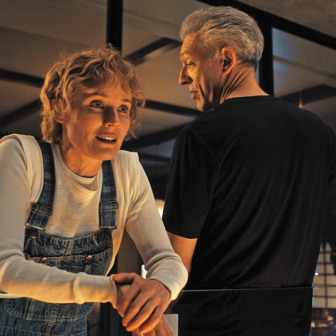Part of our collection of articles on Australian history’s missing women, in collaboration with the Australian Dictionary of Biography
Sylvia Breamer’s light might have well and truly dimmed — her movies have all but vanished and only a handful of film buffs and historians would recognise her name — but she was the toast of Australia during the silent film era. Alongside her better-remembered contemporaries, Louise Lovely and Enid Bennett, this famed beauty was the Naomi Watts or Cate Blanchett of her day, one of the first Australians to make it in Hollywood.
Breamer was born Sylvia Bremer in Sydney’s Double Bay, the second child of Frederick Glasse Bremer and Jessie B. Bremer (nee Platt). The Bremers were a noted naval family — her grandfather, Sir James, had claimed Hong Kong for the British — and Sylvia was raised among the cream of Sydney society. Educated at the elite Ascham school, she enjoyed horseriding and amateur theatricals.
In 1910, the year she turned thirteen, a series of events transformed Breamer’s world. Her father died suddenly, aged only fifty-six. Then, just four months later, her mother remarried and Sylvia acquired a stepfather, judge A.G. Plunkett. Finally, that same year, Breamer began the elocution training that would launch her theatrical career.
Although lessons of this kind were commonplace in Breamer’s milieu, her vocal talents and ingenue charm soon set her apart. Within two years, she was the standout at the Commonwealth Eisteddfod and began to star in amateur theatre. Then, in 1913, she was signed for her first professional engagement by the theatrical behemoth J.C. Williamson. The next few years of frenetic work and ill-fated romance set the tone for what was to come. As part of the Williamson company, she toured the latest Broadway hits around Australia and New Zealand, and in June 1914 she married Edwin Willett Morrison, a Williamson producer twenty-eight years her senior.
Breamer’s big break came when she replaced indisposed leading lady Muriel Starr in a 1915 production of Bought and Paid For. After winning glowing reviews for her performance, Breamer set her sights on an overseas career. For most Australians during this era, “overseas” still meant Britain, but Breamer had a different destination in mind. J.C. Williamson was a trans-Pacific operation that exported American plays and stars to the antipodes. Breamer had spent three years immersed in this US-centric company, her new husband was an American, and her mental universe centred on Broadway rather than London’s West End. And so, in October 1916, she and her husband set sail to try their luck across the Pacific — a quest that would soon become a rite of passage among Williamson alumni.
Unlike most of the Australians who would follow in her wake, Breamer had little difficulty cracking the US market. After starting out in a major stage production on the east coast, she signed with film mogul Thomas Ince and shifted to Hollywood. Her first film was the 1917 baseball drama The Pinch Hitter. When her contract with Ince expired the following year, she became a staple in J. Stuart Blackton films, with the war drama Missing (1918) providing the first of many leading roles. The war also prompted a name change. With anti-German sentiment running high, Sylvia was advised to alter the Germanic “Bremer” to “Breamer.” While her career went from strength to strength, though, her marriage hit the rocks. In December 1916 the couple separated, and in 1918 Breamer filed for divorce.
By late 1918, this young Australian was the talk of Hollywood. Photoplay chose her for its December cover, and the accompanying text proclaimed Breamer “the most successful new young lady of the year.” As her profile grew, Breamer’s persona became fused with an exoticised idea of Australia. In a tradition that continues to this day, her Australian roots saw her branded as a natural and authentic beauty whose looks derived from sun and sport rather than cosmetics. Reporters invented a childhood spent among “crocodiles, Aborigines and iguanas,” and marvelled at her “hypnotic” gaze. According to the photographer Paul Greenbaux, Breamer’s eyes had “a deeper and more poignant appeal than those of Mona Lisa.”

Sylvia Breamer by Witzel Studios, c. 1920. National Portrait Gallery
As the jazz age began, Breamer’s life fell into place. After a visit in 1920, her mother, stepfather and two siblings decided to join Sylvia in California. The family migrated the following year, her brother Jack entering the movie business as a cameraman and her sister Doris marrying stage actor William J. Kelly and settling in New York. After several years of freelancing, Breamer won a contract with First National Pictures and began making the biggest films of her career. She played the sister in flapper classic Flaming Youth (1923) and the title role in The Woman on the Jury (1924). But her greatest hit was The Girl of the Golden West (1923), a goldrush epic adapted from the celebrated David Belasco stage play. Breamer played the “girl,” and her performance was hailed as “flawless and charming.” By this point, she was earning $1000 a week and co-owned a weekend getaway in Laurel Canyon.
In November 1924, at the peak of her fame, Breamer wed Harry W. Martin, a celebrity doctor who did a brisk trade in abortions and VD treatment. Swept up in her new role as wife, Breamer told the Los Angeles Times she was “out of pictures for good.” But this second marriage proved no more successful than the first. Breamer filed for divorce in 1928, citing “mental cruelty.”
Single once more, Breamer looked to work for consolation. But her 1924 retirement declaration had proved prescient: from this point, she appeared in only one more silent film, Lightning Reporter (1926). After that, the offers dried up. Her youth was on the wane, she had no agent to hustle on her behalf, and the “talkies” were about to revolutionise the industry. Like many silent stars, Breamer had no luck in the sound era, and returned instead to the grind of stock theatre. When not touring, she was a fixture on the Hollywood party scene.
In 1931, Breamer wed her third older man, Edmund Russell Bohan, an LA businessman twenty-three years her senior. Her new husband’s wealth provided a buffer from the Depression, but work remained elusive. Her final movie credit — and only sound film — was a supporting role in Too Many Parents (1936). Three years later, around the time her mother died, Breamer’s third marriage ended in an ugly lawsuit.
After moving to New York in 1940, Breamer’s physical and mental health declined rapidly. Apart from her sister’s family, she was near friendless in the city, and sought refuge in liquor. Her fatal heart attack in June 1943 went little noted. Despite her forty-eight film credits between 1917 and 1936, Breamer’s death was met with only a brief notice in the New York Times and resounding silence in the Australian press. She had shunned Australia since her 1916 departure, and now her birth country returned the favour. Image-conscious until the end, her death certificate listed her age as forty. She was, in truth, a few days short of forty-six.
Further reading
Who Was Sylvia? A Biography of Sylvia Breamer, by Ralph L. Marsden, Screencrafts Productions, 2016




